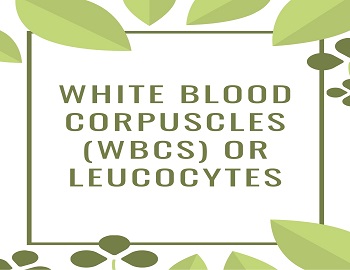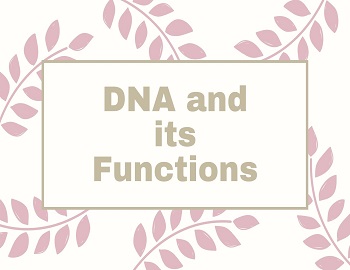Table of Contents
Chemical Coordination in Plants:
Plants do not have a nervous system but they coordinate their activities by means of some chemicals called the plant hormones or phytohormones. Depending upon the effect on plants growth, phytohormones have been grouped into the following categories-
- Growth Promoters – These are the phytohormones which stimulate the growth of the plants. These include auxin, gibberellins, cytokinins, florigen, etc.
- Growth Inhibitors – these are the phytohormones which retard the growth & other physiological activities of the plants. These include Abscisic acid, ethylene, dormin, etc.
Auxin:
- was the first hormone to be discovered.
- Auxins were discovered by Dutch botanist F.W.Went, by experimenting on oat (Avena sativa).
- They are produced by the region of rapid growth & differentiation such as apical meristems (tips of roots & stems), young flower buds, young leaves & developing seeds.
- Auxins stimulate the tissues near the root tip & shoot tip to show rapid cell division.
- Auxin can be used for the production of seedless fruits or parthenocarpy.
- Phototropic & geotropic movements of plants are mediated through the differential distribution of IAA (natural auxin).
Gibberellins:
- Extract from the fungus.
- weakly acidic plant growth hormones that possess gibbane ring structure & are able to bring about cell elongation of both leaves & stems in general & internodal length of genetically dwarf plants in particular like corn, pea, etc.
Cytokinins:
- Are growth hormones of basic nature which are usually amino-purine (occasionally adenine) derivatives & promote cell division in plants.
Abscisic acid:
- It induces dormancy & helps overcome stress conditions.
- It is also called a stress hormone or dormin.
- It induces parthenocarpy in the case of Rose.
- It causes the abscission of fruits & flowers.
Ethylene:
- Is synthesized in the plants from amino acid methionine.
- It produces the affect on the growth of vegetative & reproductive parts of the plants.
- It causes stunted growth in peas.
- It is associated with fruit ripening, leaf drop & senescence.
Chemical Coordination in Animals:
- Several activities of the human body like growth, reproduction & development are controlled by secretions from certain glands called endocrine glands or ductless glands. The secretion of the endocrine glands is called hormones.
- The term hormone was devised in 1902 by Bayliss & Starling in England when they discovered the secretin hormone.
Pituitary Gland (Hypophysis):
- Also called the master gland.
- situated in the ventral side of the brain.
- Anterior lobe secretes six hormones –
- Thyroid stimulating hormone which stimulates the thyroid gland to grow & to produce thyroxine.
- Growth hormone which stimulates the growth of tissues particularly the bones. Its deficiency causes dwarfism & if produced excessively, it causes gigantism.
- Adreno-cortico-trophic hormone stimulates the adrenal cortex to produce its own hormone Cortisone.
- Prolactin or Luteotrophic hormone stimulates the mammary glands to produce milk after pregnancy.
- Follicle stimulating hormone – influences the growth & maturation of Graafian follicles in the ovary which then produce their own female sex hormone, oestrogen & the maturation of spermatozoa in the testes.
- Luteinizing hormone stimulates the interstitial cells of the testis to produce the male sex hormone, testosterone. In the female, it causes the ripe ovum to be released from the follicle, the release of oestrogen hormone & formation of corpus luteum.
- Middle lobe secretes only one hormone, melanocyte stimulating hormone (MSH). It is associated with growth & development of melanocytes which gives the skin its colour. It also regulates the contents of lipids in hair.
- Posterior lobe secretes two hormones–
- Oxytocin – It causes the contraction of the uterus in females during childbirth & also stimulates the mammary glands to release their stored milk after pregnancy.
- Vasopressin – It controls water reabsorption in the distal tubule & collecting tubule of the nephrons of a kidney during the urine formation. It also maintains blood pressure.
Adrenal glands (Suprarenal Gland):
- Adrenal glands are paired glands located on the upper ends of the kidneys.
- Produce three hormones – Cortisone, Cortisol & Aldosterone.
- Cortisone & cortisol influence the metabolism of carbohydrates, fats & proteins.
- Aldosterone maintains electrolyte balance & blood volume.
- Deficiency of Aldosterone causes Addison’s disease.
- The medulla of the adrenal gland produces two hormones – adrenaline (epinephrine) & noradrenaline (norepinephrine).
- Adrenaline is an emergency hormone because of which adrenal gland is also called the emergency gland or 3F gland i.e. fright, fight & flight.
- Adrenaline is directly secreted into the blood & carried to different parts of the body. The target organs or the specific tissues on which it acts include the heart. As a result, the heart beats faster, resulting in a supply of more oxygen to our muscles.
Thyroid Gland:
- present in the front part of the larynx & upper part of the trachea in the neck region.
- Largest endocrine gland.
- This gland releases a hormone called Thyroxine.
- Hypothyroidism (deficiency of thyroxine) – causes Cretinism, Myxoedema (Gull’s disease), Goitre (due to deficiency of iodine in the diet. Iodine act as the raw material for the synthesis of thyroxine).
- Hyperthyroidism (excess of thyroxine) causes Grave’s disease.
Other Points:
- The pancreas produces two hormones- Insulin (decreases blood glucose level), Glucogen (Elevates blood glucose level). The deficiency of insulin hormone in the human body causes diabetes.
- The ovary (Uterus) produces Estrogen (oestrogen) and Progesterone. These hormones control the normal functioning of female sex organs.
- Testis produces Testosterone (Androgens) which regulates the development of reproductive male organs.
- Insulin is a globular protein and Myosin is a fibrous protein.









Comments (No)